Ahmad Shah Qajar
| Ahmad Shah Qajar احمد شاه قاجار | |||||
|---|---|---|---|---|---|
|
Shahanshah of Persia | |||||
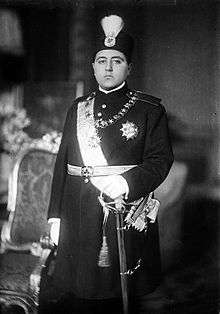 | |||||
| Shah of Persia | |||||
| Reign | 16 July 1909 – 15 December 1925 | ||||
| Predecessor | Mohammad Ali Shah Qajar | ||||
| Successor | Reza Shah Pahlavi | ||||
| Born |
21 January 1898 Tabriz, Azerbaijan, Persia | ||||
| Died |
21 February 1930 (aged 32) Neuilly-sur-Seine, Paris, France | ||||
| Burial | Karbala, Iraq | ||||
| Spouse | Badr-almoluk | ||||
| Issue | Irandokht | ||||
| |||||
| Dynasty | Qajar | ||||
| Father | Mohammad Ali Shah | ||||
| Mother | Malekeh Jahan | ||||
| Religion | Shia Islam | ||||
| Tughra |
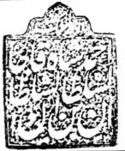 | ||||
Ahmad Shāh Qājār (Persian: احمد شاه قاجار; January 1898 – 21 February 1930) was Shah of Persia from 16 July 1909, to 15 December 1925, and the last ruling member of the Qajar dynasty.
Reign
Ahmad Shah ascended to the Sun Throne on 16 July 1909, following the overthrow of his father and predecessor, Mohammad Ali Shah, who had attempted to reverse earlier constitutional restrictions on royal power, and thus enraged the majority of Persians. It is alleged that Ahmad Shah was one of the most selfish kings of Iran while others regard him as a strong ruler, interested in attending to the matters of government.
After removing Muhammad Ali Shah from power, the Grand Majles placed Ahmad Shah on the throne. The Grand Majles consisted of 500 delegate members who came from different backgrounds. They held a special tribunal in order to punish all those who participated in the civil war, among those hanged was Sheikh Fazlollah Nuri. They also brought in new reforms that were not seen in Persia before. They abolished class representation; created five new seats for the minorities in the Majles (Persian parliament); the Armenians got two seats, other religious minority groups such as Jews, Zoroastrians and Assyrians each got one seat in the new government; the Majles also democratized the electoral system; diminished the electoral dominance of Tehran and even lowered the voting age from twenty five to twenty.
Not much is known about Ahmad's early life prior to his ascendancy to the throne. He was very attached to his father. After his father left, Ahmad felt isolated and bitter. Due to his young age, a regent, his uncle Ali Reza Khan Azod al-Molk, took charge of his affairs. However, his lavish lifestyle did not gain him any favors with the Persian people. Ahmad Shah inherited a kingdom in turmoil, and a constituency frustrated with British and Russian imperialism and the absolute rule of his father.
Ahmad Shah attempted to fix the damage done by his father by appointing the best ministers he could find. He was, however, an ineffective ruler who was faced with internal unrest and foreign intrusions, particularly by the British and Russian Empires. Russian and British troops fought against the Ottoman forces in Persia during World War I. The War led to outcries across the country because the people of Persia were not happy that they were being used as a battleground. Thus, leading to local movement across the country that tried to challenge the power of Ahmad Shah Qajar and his government.
The Second Majles convened on November 1910 and just like the First Majlis, did not lead to any relevant accomplishment. The Majles was rendered ineffective because the central government was weak and did not have enough influence to reign in the changes that it had proposed. It is alleged that the Second Majles did not get along with Ahmad Shah.

In 1917, Britain used Persia as the springboard for an attack into Russia in an unsuccessful attempt to reverse the Russian Revolution of 1917. The newly born Soviet Union responded by annexing portions of northern Persia as buffer states much like its Tsarist predecessor. Marching on Tehran, the Soviets extracted ever more humiliating concessions from the Qajar government – whose ministers Ahmad Shah was often unable to control. The weakness of the central bureaucracy in the face of such aggression by an atheist foreign power sparked seething anger among many traditional Persians – including the young Ruhollah Khomeini, who would later condemn both communism and monarchy as treason against Persia's sovereignty and the laws of Islam.
By 1920, the government had virtually lost all power outside its capital and Ahmad Shah had lost control of the situation. The Anglo-Persian Agreement, along with new political parties, furtherimmobilized the country. The Moderates and Democrats often clashed, particularly when it came to minority rights and secularism. The debates between the two political parties led to violence and even assassinations.
The weak economic state of Persia put Ahmad Shah and his government at the mercy of foreign influence; they had to obtain loans from the Imperial Bank of Persia. Furthermore, under the agreement, only a small fraction of the income generated by the Anglo-Persian Oil Company was received by Persia. On the other hand, the Red Army along with rebels and warlords ruled much of the countryside.
On 21 February 1921, Ahmad Shah was pushed aside in a military coup by his Minister of War and commander of the Cossack garrison, Colonel Reza Khan, who subsequently seized the post of Prime Minister. During the coup, Reza Khan used three thousand men and only eighteen machine guns, a very bloodless coup that moved forward quickly. Reza Khan was a self-made man who climbed his way up through the military ranks and appeared to be the right man to take back control of Persia. One of his first actions was to rescind the Anglo-Persian Treaty, and this was seen as a very successful diplomatic move since the treaty was very unpopular. In addition, he signed the Russo-Persian Treaty of Friendship. This agreement canceled all previous treaties between the two countries and also gave Persia full and equal shipping rights in the Caspian Sea.
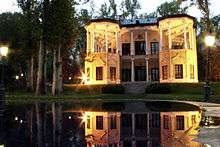
Stripped of all his remaining powers, Ahmad Shah went into exile with his family in 1923. Ahmad Shah's apparent lack of interest in attending to the affairs of the state and poor health had prompted him to leave Persia on this extended “European Tour.” He was formally deposed on 31 October 1925, when Reza Khan was proclaimed Shah by the Founders Assembly, taking the title Reza Shah Pahlavi. Reza Shah and the Majles thus terminated the Qajar Dynasty and established the Pahlavi Dynasty.
Exile
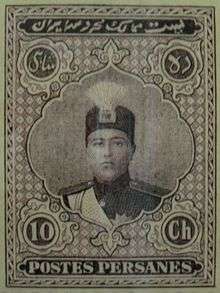
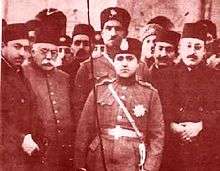
The coup of 1921 rendered Ahmad Shah politically weaker and less relevant. In 1923, Ahmad Shah left Persia for Europe for health reasons. Later, the formal termination of the Qajar Dynasty by the Majles, turned Ahmad Shah's 1923 European tour into exile. From exile, Ahmad Shah issued the following declaration indicating his displeasure with the turn of events that had led to his overthrow:
At this tragic moment when the future of my country is at risk, all my thoughts are with my people, to whom I address this declaration: The coup d'état just committed by Reza Khan against the constitution and my dynasty, was committed through the force of bayonets. It contravenes the most sacred laws and fatally leads my people into great calamities and undeserved sufferance. I strongly raise my voice in protest against this coup d'état. Now and in the future, I consider null and void all acts emanating from such a government and committed under its rule. I am and remain the legitimate and constitutional sovereign of Persia, and I await the hour of my return to my country to continue serving my people.[1]
Shortly after the coup, Mustafa Kemal Ataturk who had just been elected Turkey's first president[2][3] offered to help restore Ahmad Shah to the throne. To that end, he summoned Persian Ambassador to Turkey, Anoushirvan Sepahbody to the presidential palace and instructed him to immediately intervene on his behalf with Soltan Ahmad Shah in Paris with the following offer of assistance:
The Turkish government, in pursuance of its own national interest and for reasons of friendship, goodwill, and a desire to assist Your Majesty, is willing to extend a formal invitation to Your Majesty, to travel to Turkey and hence, to offer the help of a sufficient number of Turkish troops for Your Majesty to be able to enter Persia from the West and regain his throne.[1][4]
Ahmad Shah politely declined this offer, possibly either due to pride or lack of interest in continuing as king. Allegedly, it was only after this rejection of Ataturk's offer that the Turkish government threw its full support behind the new government of Reza Shah Pahlavi thus recognizing him as the new sovereign of Persia.
Prior to his death, it is said that Ahmad Shah followed frequent crash diets which did not help his health. For example, he lost and gained 90 kg within a two-year span. He died in 1930 at Neuilly-sur-Seine, outside Paris, France, and was buried in his family crypt in Kerbela, Iraq.[5] His brother, former crown prince Mohammad Hassan Mirza, assured the physical continuation of the dynasty through his descendants.
Personal life
Ahmad Shah Qajar married five times. His first wife was Lida Jahanbani. He did, also, have 4 children from 4 wives:
- Princess Maryamdokht (1915 – 10 November 2005), daughter of Delaram Khanoum
- Princess Irandokht (1916 – 1984), daughter of Princess Badr-el-Molouk Vala
- Princess Homayoundokht (1917 – 2011), daughter of Princess Khanoum Khanoumha Moezzi
- Prince Fereydoun Mirza (1922 – 24 September 1975), son of FatemehKhanoum[6]
He had 12 grandchildren, who respectively carry the last names Albertini, Faroughy, Panahi and Qajar (also spelled Kadjar)
List of Prime Ministers
- Mohammad-Vali Khan Tonekaboni Sepahdar A'zam (2nd Term) (29 April 1909 - 3 May 1909)
- Najafqoli Khan Bakhtiari Saad od-Dowleh (1st Term) (3 May 1909 - 16 July 1909)
- Mohammad-Vali Khan Tonekaboni Sepahdar A'zam (3rd Term) (16 July 1909 - 6 October 1909)
- Hassan Vosough od-Dowleh (1st Term) (6 October 1909 - 15 July 1910)
- Mirza Hassan Khan Ashtiani Mostowfi ol-Mamalek (1st Term) (15 July 1910 - 19 July 1911)
- Hassan Vosough od-Dowleh (2nd Term) (19 July 1911 - 26 July 1911)
- Mohammad-Vali Khan Tonekaboni Sepahdar A'zam (4th Term) (26 July 1911 - 23 December 1912)
- Najafqoli Khan Bakhtiari Saad od-Dowleh (2nd Term) (23 December 1912 - 11 January 1913)
- Mirza Mohammad-Ali Khan (11 January 1913 - 1 July 1914)
- Mirza Hassan Khan Ashtiani Mostowfi ol-Mamalek (2nd Term) (1 July 1914 - 1 February 1915)
- Prince Abdol-Hossein Mirza Farmanfarma (1st Term) (1 February 1915 - 2 July 1915)
- Prince Abdol-Majid Mirza Eyn od-Dowleh (1st Term) (2 July 1915 - 18 August 1915)
- Mirza Hassan Khan Ashtiani Mostowfi ol-Mamalek (3rd Term) (18 August 1915 - 25 December 1915)
- Prince Abdol-Hossein Mirza Farmanfarma (2nd Term) (25 December 1915 - 1 March 1916)
- Hassan Vosough od-Dowleh (3rd Term) (1 March 1916 - 7 July 1917)
- Mirza Hassan Khan Ashtiani Mostowfi ol-Mamalek (4th Term) (7 July 1917 - 19 December)
- Prince Abdol-Majid Mirza Eyn od-Dowleh (2nd Term) (28 December 1917 - 20 May 1918)
- Hassan Khan Moshir od-Dowleh Pirnia (1st Term) (20 May 1918 - 2 August 1918)
- Samad Khan Momtaz os-Saltaneh (2 August 1918 - 20 August 1918)
- Hassan Khan Moshir od-Dowleh Pirnia (2nd Term) (20 August 1918 - 16 October 1920)
- Fathollah Khan Akbar Sepahdar Rashti (16 October 1920 - 21 February 1921)
- Zia'eddin Tabatabaee (21 February 1921 - 4 June 1921)
- Ahmad Qavam os-Saltaneh (1st Term) (4 June 1921 - 12 October 1921)
- Prince Malek Mansur Mirza Shoa os-Saltaneh (12 October 1921 - 20 January 1922)
- Hassan Khan Moshir od-Dowleh Pirnia (3rd Term) (20 January 1922 - 11 June 1922)
- Ahmad Qavam (2nd Term) (11 June 1922 - 30 January 1923)
- Mirza Hassan Khan Ashtiani Mostowfi ol-Mamalek (5th Term) (30 January 1923 - 15 June 1923)
- Hassan Khan Moshir od-Dowleh Pirnia (4th Term) (15 June 1923 - 28 October 1923)
- General Reza Khan Sardar-Sepah (28 October 1923 - 1 November 1925)
Honors
Persia
- Grand Master and Grand Cordon of the Order of Zulfiqar
- Grand Master and Knight, First Class of the Order of the imperial portrait
- Grand Master and Knight, First Class of the Neshan-e Aqdas
- Grand Master and Knight, First Class of the Order of the Lion and the Sun
Foreign
- Grand Cordon of the Order of Leopold of Belgium (1914)
- Collar of the Order of Muhammad Ali of Egypt (1919)
- Grand Cross of the Legion d'Honneur of France (1914)
- Supreme Knight of the Order of the Most Holy Annunciation of Italy
- First Class of the Osminieh Order of the Ottoman Empire (1914)
- Knight of the Order of St. Andrew of Russia
- Knight of the Order of St. Alexander Nevsky of Russia
- Knight of the Order of the White Eagle (Russia) of Russia
- Knight of the Order of Saint Stanislaus, 1st Class of Russia
- Knight of the Order of St. Anna, 1st Class of Russia
- Grand Cross w/Collar of the Order of Charles III of Spain (1914)
See also
- 1905 Persian Constitutional Revolution
- 1909 Persian legislative election
- 1914 Persian legislative election
- 1919 Anglo-Persian Agreement
- 1921 Persian coup d'etat
- 1921 Russo-Persian Treaty of Friendship
- Ahmad Shahi Pavilion
- Anglo-Russian Entente
- Pahlavi dynasty
- Jungle Movement of Gilan
- Persian Campaign
- Persian Cossack Brigade
- Persian Central Government Gendarmerie
- Qajar family tree
- Simko Shikak revolt
- South Persia Rifles
- Soviet Republic of Gilan
- Reza Shah Pahlavi
References
- 1 2 "Soltan Ahmad Shah and the Coup of 1925-26". qajarpages.org. Retrieved 2014-01-21.
- ↑ "ATATURK: Creator of Modern Turkey". columbia.edu.
- ↑ http://socialscience.tjc.edu/mkho/fulbright/1998/PatrickHotle/mustafa_kemal_ataturk.htm
- ↑ Makki, Hosein (1983), Mokhtassari az Zendegani-e Siassi-e Soltan Ahmad Shah (in Persian), p. 244
- ↑ "Portraits and Pictures of Soltan Ahmad Shah Qajar (Kadjar)". qajarpages.org. Retrieved 2014-01-21.
- ↑ "Children of Soltan Ahmad Shah Qajar (Kadjar)". Qajarpages.org. Retrieved 2014-01-21.
Ghani Cyrus, Iran and the Rise of the Reza Shah:From Qajar Collapse to Pahlave Order, I.B.Tauris & Co Ltd, 2000. Abrahamian Ervand, A History of Modern Iran, Cambridge University Press, 2008, p. 62.
- Abrahamian, p. 62
- Abrahamian, p. 58
- Abrahamian, p. 54
- Abrahamian, p. 55
- Abrahamian, p. 62
Ghani, p. 23, p. 308 Katouzian Homa, State and Society in Iran:The Eclipise of the Qajars and the Emergence of the Pahlavis, I.B. Tauris & Co Ltd, 2006, p. 114. Abrahamian, p. 63 Katouzian, Preface Ghani, p. 23
Further reading
- Nosrati Ahmad, A Letter to Intellectuals: The Manipulation of the Persian Nation by Western Power and Russian Policy, Trafford Publishing, 2004.
- Abrahamian Ervand, “Oriental Despotism:The Case of Qajar Iran” International Journal of Middle Eastern Studies, Vol. 5, No. 1 (Jan. 1974).
- Ammanat Abbas, “Russian Intrusion into the Guarded Domain": Reflections of a Qajar Statesman on European Expansion” Journal of the American Oriental Society, Vol. 113, No. 1 (Jan. – Mar. 1993), pp. 35–56.
External links
| Wikimedia Commons has media related to Ahmad Shah Qajar. |
- Qajar Portal
- History of Iran: Qajar Dynasty
- A postage stamp with his image
- A sympathetic profile of him
- Shahāb Mirzāi, Mohammad-Hasan Mirzā: The last Crown Prince of Qajar, in Persian, Jadid Online, 2008
- A slide show of some photographs from a collection belonging to Mohammad-Hasan Mirzā, by Shahāb Mirzāi, Jadid Online, 2008 (2 min).
| Ahmad Shah Qajar Born: January 21 1898 Died: 21 February 1930 | ||
| Regnal titles | ||
|---|---|---|
| Preceded by Mohammad Ali Shah Qajar |
Shah of Persia 1909–1925 |
Succeeded by Reza Shah Pahlavi |
| Preceded by Mohammad Ali Shah Qajar |
Head of the Qajar Dynasty 1909–1930 |
Succeeded by Fereydoun Mirza |
| New title | Heir Presumptive Qajar dynasty 1925–1930 |
Succeeded by Mohammad Hassan Mirza |